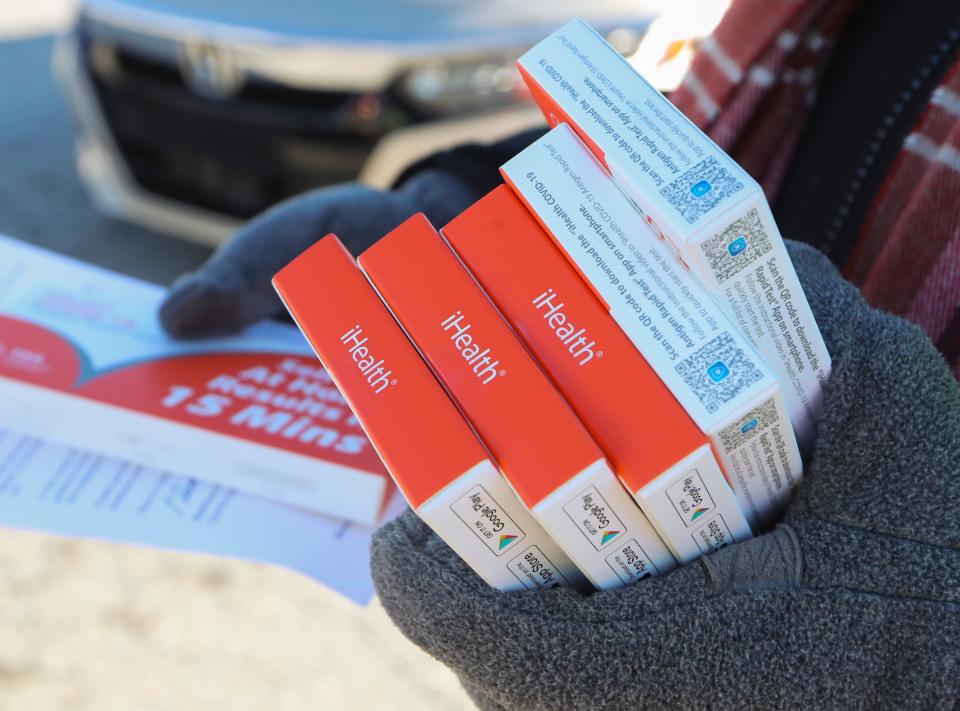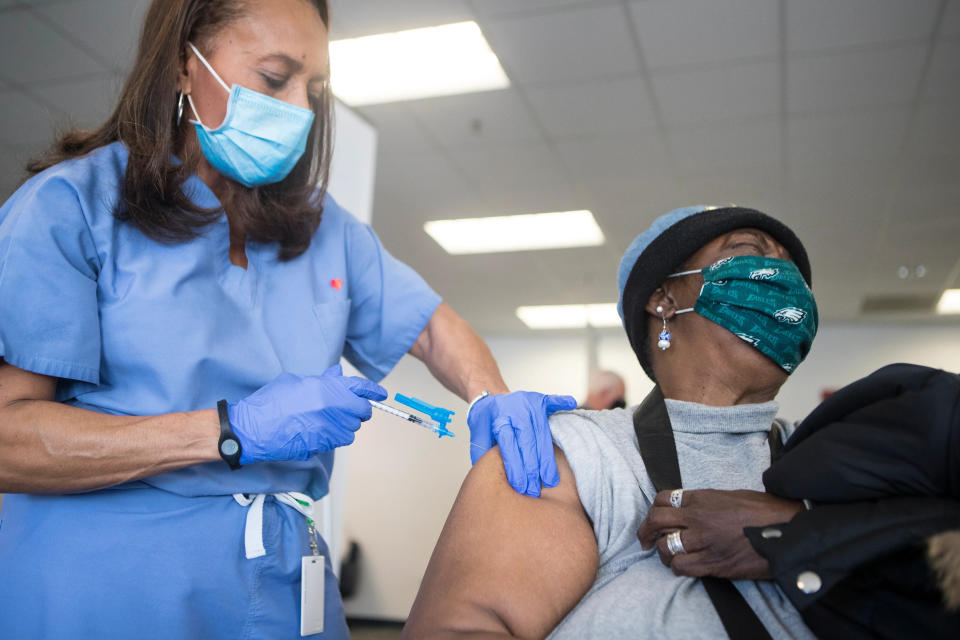Delaware is reporting rising COVID cases, hospitalizations again. What that means for you
- Oops!Something went wrong.Please try again later.
The percent of positive COVID-19 cases and the number of hospitalizations are on the rise again in Delaware, according to the state’s database.
An average of 19% of tests were coming back positive this past week, and the state reported 127 hospitalizations as of Thursday.
The last time Delaware saw this many positive tests was in late January. The number of people in the hospital with COVID-19 had also been steadily decreasing throughout March and most of April, but it again exceeded 100 as of May 6.
To put that in perspective, more than 750 people were in the hospital with COVID during the omicron surge in mid-January, and that number decreased to as low as 20 people in late March.
So, what do all these numbers mean for where we’re at in the pandemic?
Dr. Karyl Rattay, director of the Division of Public Health, said in a recent interview that the number of hospitalizations is considered the most accurate indicator of the severity and spread of COVID-19 – but she also said it is a lagging indicator.
That means that when a surge happens, public health officials won’t see that uptick in hospitalizations until about two weeks later.

PATH FORWARD:What Delaware can learn about grief and hope amid another tragic milestone for COVID-19
It’s one reason Rattay said the state must consider all the indicators together and look for trends. She also recognized that the number of positive cases continues to be undercounted, especially now as many people use at-home tests and don’t report their results.
“I’m thrilled that home tests are so widely available now because that enables people to quickly know their status to do what they need to take care of themselves and protect others,” she said. “But absolutely positive cases from home tests don’t make it into our records. Whether it’s influenza or measles or pertussis, we capture confirmed cases.”
Cases have always been undercounted when it comes to infectious diseases and viruses, Rattay said, and public health officials in Delaware and nationally have known that since the beginning. But even without every data point, the trends are still there.

For example, in late December and early January, Rattay said public health officials could see that the numbers spiked despite the likelihood that many people were taking at-home tests at that time.
Also, consider all the people who do not have symptoms and may never test. There will always be missing cases, Rattay said, but that doesn’t mean the data are not helpful.
How does Delaware compare?
During a May 4 interview, Rattay said that – even though cases and hospitalizations were going up – she was pleased that cases were increasing more slowly than in some of the other states in the Northeast.
But now Delaware seems to be catching up and even exceeding the percent of positive cases in states like Pennsylvania, New Jersey and New York, which all had between 10% and 14.9% positivity rates as of May 15, according to the Centers for Disease Control and Prevention.
The impact of COVID is still ongoing in so many Delaware communities. Just this past week, Dover announced that it was closing city buildings – including City Hall, the library and recreation center – through Monday due to an increased number of COVID-19 cases among staff.
COVID-19 cases have been rising in most states, predominantly because of new and more infectious omicron subvariants, waning immunity from both vaccines and previous infections, and fewer people masking up, according to a White House briefing on Wednesday.
It's happening again: COVID-19 cases are back on the rise. There are 3 main reasons why.
While the CDC estimates that nearly 60% of all Americans have had COVID-19 at this point, there is still a lot of unpredictability and unknowns about how much those levels of immunity protect people from future variants.

What the public health officials do know is that vaccinations and boosters do add another level of protection against COVID-19 – whether people have tested positive for the virus recently or not.
More than 64% of Delawareans are fully vaccinated as of Thursday, but more than 70% of children ages 5 to 11 are still not fully vaccinated.
“It’s a huge concern for me as a public health official and pediatrician,” Rattay said, referring to the low pediatric vaccination rates in Delaware and nationwide. “We don’t normally see hesitancy like this among families of our pediatric population.”
HESITATION: Parents, even vaccinated ones, are reluctant to get kids COVID shot. The state is worried
Despite reports that show that the Pfizer vaccine has been well-tolerated among this 5 to 11 age group, Rattay said parents seem to still have significant concerns about safety. She advised that all families turn to their pediatrician or health care providers with any questions they have rather than seek information on social media or other sources.
Precautions and guidelines
Now that cases are on the rise in Delaware again, Rattay recommended that people remember the tools that are still available to protect them from getting sick with COVID-19 – most notably, staying up to date on vaccines and boosters.
Even as people cling to some optimism as masks become less common and fewer people are dying from COVID-19, it’s important to remain cautious, Rattay said.
This is especially true for people who are high risk – such as those who are over the age of 65, are immunocompromised or suffer from chronic conditions – or people who spend time with others who are high risk or unvaccinated.
Here are some things that Rattay said people can do to stay vigilant:
Get the second booster if you are over the age of 50.
Consider wearing a mask more often in public spaces, especially indoors.
If you have any symptoms of illness, stay home and get tested.
If you’ve been exposed, get tested and wear a mask in the meantime.
If you’re unvaccinated, it’s wise to test regularly.
If you test positive, notify the people you’ve been in contact with and stay home. Ask your doctor about possible treatment options.
“Delawareans have been hearing these recommendations, many of them for two years. And they’ve got the tools in the toolbox,” Rattay said. “They know what are the right things to do. So, we’re really hoping that people will do what’s necessary to keep themselves and each other safe.”
Emily Lytle covers Sussex County from the inland towns to the beaches. She also aims to tell meaningful stories about the health and wellness of communities across Delaware. Contact her at elytle@delmarvanow.com or 302-332-0370. Follow her on Twitter at @emily3lytle.
This article originally appeared on Delaware News Journal: Delaware COVID cases increasing as coronavirus lingers
